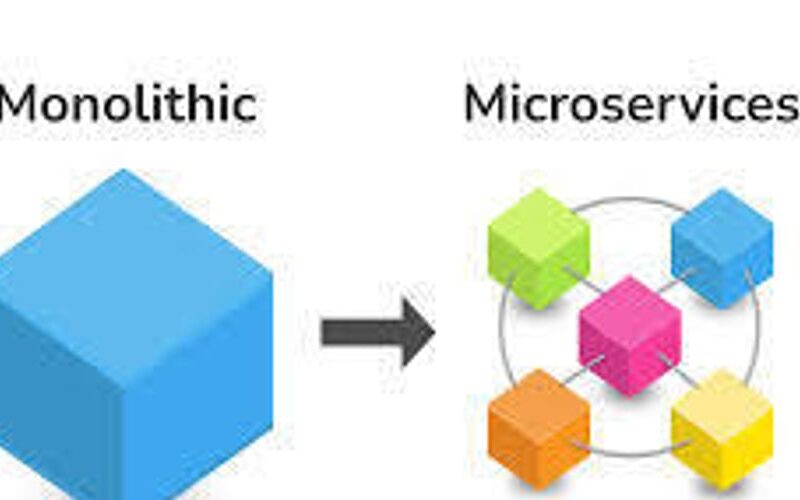In the evolving landscape of software development, the transition from monolithic architectures to microservices has become a significant trend. This transformation promises enhanced scalability, flexibility, and maintainability. In this blog, we will delve deep into the intricacies of both architectures, their pros and cons, and provide a detailed roadmap for migrating from a monolithic system to a microservices-based architecture.
Understanding Monolithic Architecture
A monolithic architecture is a traditional model for the design of a software program. Here, the application is built as a single, unified unit. Typically, a monolithic application consists of:
A single codebase: All functionalities are interwoven and reside in one codebase.
Tightly coupled components: Changes in one component often require changes in others.
Shared database: A single database is used by the entire application.
Pros of Monolithic Architecture
- Simpler Development: With all components in a single codebase, development is straightforward.
- Easier Testing: Testing a monolithic application can be simpler because all components are integrated.
- Performance: Communication between components is faster due to direct function calls.
Cons of Monolithic Architecture
- Scalability Issues: Scaling a monolithic application can be challenging since the entire application needs to be scaled, not individual components.
- Limited Flexibility: Technologies and frameworks used are hard to change due to tight coupling.
- Long Build and Deployment Times: As the application grows, build and deployment times increase.
- Maintenance Challenges: Updating a monolithic application can be risky and time-consuming.
Introduction to Microservices Architecture
Microservices architecture breaks down an application into smaller, loosely coupled, and independently deployable services. Each service is responsible for a specific business functionality and communicates with other services through well-defined APIs.
Pros of Microservices Architecture
- Scalability: Individual services can be scaled independently, improving resource utilization.
- Flexibility: Different technologies and frameworks can be used for different services.
- Faster Development and Deployment: Smaller codebases allow for quicker builds and deployments.
- Resilience: Failure in one service does not necessarily impact others.
Cons of Microservices Architecture
- Complexity: Managing multiple services can be complex.
- Communication Overhead: Inter-service communication can introduce latency and require careful management.
- Testing Challenges: Ensuring the integration of multiple services can be more challenging.
- Data Management: Distributed data management can become complicated.
Transitioning from Monolithic to Microservices
Migrating from a monolithic architecture to microservices is a significant endeavor. Here’s a step-by-step guide to facilitate this transformation:
- Assess and Plan
- Evaluate Current System: Understand the existing monolithic application, its components, and dependencies.
- Define Goals: Clearly outline the goals for the migration, such as improved scalability, faster deployment, or enhanced resilience.
- Create a Roadmap: Develop a detailed migration plan, including timelines, resource allocation, and potential risks.
- Identify Microservices
- Decompose the Monolith: Break down the monolithic application into smaller, manageable services based on business capabilities.
- Define Service Boundaries: Ensure each microservice has a clear boundary and is responsible for a specific functionality.
- Prioritize Services: Determine which services to develop first based on factors like business value and complexity.
- Design Microservices
- API Design: Design robust APIs for inter-service communication.
- Database Segregation: Decide on the database strategy. Consider options like database per service, shared database, or CQRS (Command Query Responsibility Segregation).
- Service Registry and Discovery: Implement mechanisms for service registry and discovery to enable services to find each other.
- Implement Microservices
- Develop Services: Start developing microservices independently using appropriate technologies and frameworks.
- Implement Inter-service Communication: Use protocols like HTTP/REST, gRPC, or messaging queues for communication between services.
- Data Management: Ensure data consistency and manage distributed transactions if necessary.
- Testing and Deployment
- Unit and Integration Testing: Test individual services and their interactions.
- Continuous Integration/Continuous Deployment (CI/CD): Implement CI/CD pipelines to automate testing and deployment.
- Monitoring and Logging: Set up comprehensive monitoring and logging to track the performance and health of services.
- Gradual Migration and Refactoring
- Incremental Transition: Gradually migrate components from the monolith to microservices.
- Refactor as Needed: Continuously refactor services to improve performance and maintainability.
- Maintain Backward Compatibility: Ensure new microservices are compatible with the existing monolithic system during the transition.
Best Practices for Microservices
- Single Responsibility Principle: Each service should have a single responsibility.
- Decentralized Data Management: Avoid a shared database to prevent tight coupling.
- Resilience and Fault Tolerance: Implement patterns like circuit breakers to handle failures gracefully.
- Automated Testing: Invest in automated testing to ensure reliability.
- Continuous Monitoring: Continuously monitor services for performance and reliability issues.
Conclusion
Transitioning from a monolithic to a microservices architecture can bring significant benefits, including enhanced scalability, flexibility, and maintainability. However, it requires careful planning, design, and execution. By following the outlined steps and adhering to best practices, organizations can successfully navigate this transformation and reap the rewards of a more modular and resilient architecture.
By leveraging microservices, businesses can respond more swiftly to changing market demands, innovate faster, and maintain a competitive edge in the digital landscape. The journey from monolith to microservices may be complex, but the payoff in terms of agility and performance is well worth the effort.
Source link
lol

